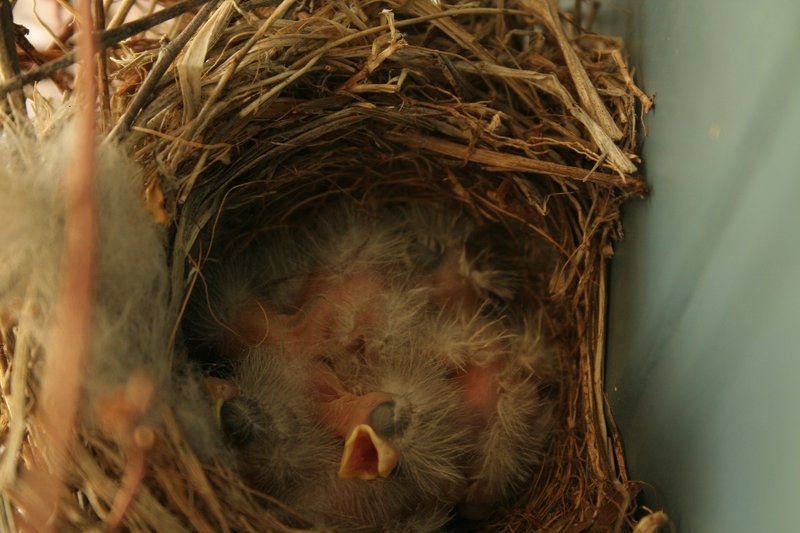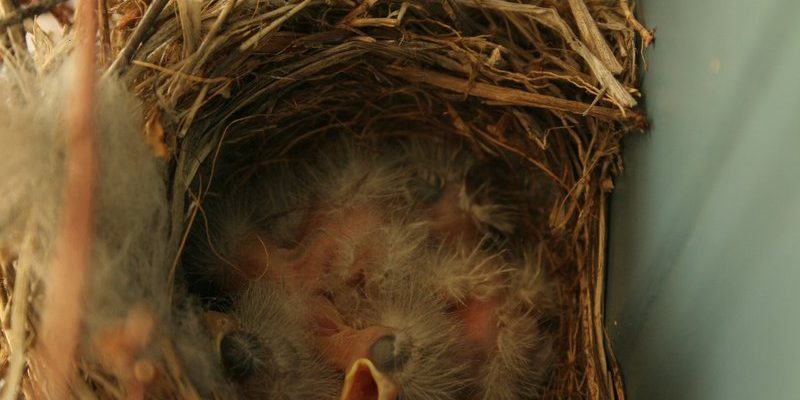
Imagine a tiny architect—each finch meticulously constructing a home for their babies, using whatever materials they can find. Finches are clever builders, and their nests are fascinating structures that tell us a lot about their behavior and needs. Whether it’s a house finch gathering straw or a goldfinch weaving grass, each species has unique traits that make their nesting habits a remarkable part of their lifecycle.
In this article, we’ll explore the different stages of a finch’s lifecycle, from choosing a mate to raising their young. If you’re curious about how these birds navigate the challenges of life, you’re in the right place!
Understanding Finch Nesting Habits
Finches are known for their resourceful nesting habits. They typically choose areas that provide shelter and safety, like shrubs or trees. When it comes to building their nests, finches are quite creative. They often use a variety of materials, including:
- Twigs
- Grasses
- Plant fibers
- Feathers
- Even pieces of string or paper!
This eclectic mix not only helps make their nests sturdy but also camouflages them against predators. If you’ve ever spotted a finch’s nest hidden high in a tree or snug in a bush, you know how well they blend in with their surroundings.
Here’s the thing: not all finches build their nests in the same way. For example, house finches tend to create cup-shaped nests while goldfinches might use a more tightly woven structure. Each species has adapted its nesting style to suit its environment and needs.
The Nesting Process: From Courtship to Laying Eggs
Once a male finch finds a mate, the courtship process begins. He’ll sing beautiful melodies to attract her, often showcasing his vibrant colors as he performs. After some time, once a bond has formed, they’ll start looking for a suitable nesting site together.
After selecting the perfect spot, the female finch goes to work on the nest. This can take anywhere from a few days to a couple of weeks. During this time, you might notice the male bringing her food, which is a sweet gesture of support as she builds their future home.
When the nest is finished, it’s time for the female to lay her eggs. Most finch species lay between 2 to 6 eggs per clutch. These eggs are usually pale blue or speckled, making them beautiful additions to the nest. She’ll typically incubate the eggs for about two weeks before they start to hatch.
The Role of Parents: Sharing Responsibilities
Both the male and female finch share parenting duties, which is one of the fascinating aspects of their behavior. While the female incubates the eggs, the male is often tasked with bringing her food and keeping watch for predators. Once the chicks hatch, both parents are involved in feeding and caring for their young.
You might be wondering how they feed their little ones. Finch parents primarily provide a diet of seeds and insects, which helps ensure their chicks grow strong and healthy. They’ll regurgitate food to feed their young, a process that’s essential for the chicks’ development.
After about 2 to 3 weeks, the fledglings will leave the nest. However, they won’t fly too far at first. Their parents continue to care for them, teaching them to find food and avoid dangers. This nurturing phase is critical, helping the young finches learn how to thrive on their own.
Finch Lifecycle Stages: Eggs to Adults
The lifecycle of a finch spans several stages, starting from the egg to adulthood. Here’s a quick rundown of their remarkable journey:
- Egg Stage: Eggs are incubated for about 12 to 14 days.
- Chick Stage: After hatching, chicks are altricial, meaning they’re born helpless and depend on their parents for warmth and food.
- Fledgling Stage: After about two weeks, the chicks develop feathers and learn to fly.
- Juvenile Stage: Once they leave the nest, they’ll stay close to their parents for a few more weeks.
- Adult Stage: Finches reach maturity at about 6 months, ready to start their own families.
Each stage requires different care and attention, showcasing the dedication finch parents have to raising their young. It’s a beautiful process that highlights the importance of nurturing in the bird world.
Challenges During Nesting and Raising Young
While finches are remarkable builders and caregivers, they do face challenges during nesting. One of the biggest threats is predators, like cats or larger birds, who may see their nests as easy meals. Loss of habitat due to urban development can also reduce safe nesting sites.
Weather can be a significant factor as well. Heavy rain, strong winds, or extreme heat can damage nests or make it difficult for parents to find food. That said, finches are pretty adaptable. They often modify their behaviors and adjust their nesting locations based on environmental changes.
Here’s a small story that illustrates their adaptability. A pair of house finches once built their nest on a busy balcony in an apartment complex. Despite the noise and activity, they thrived and successfully raised their chicks. It just goes to show how resourceful these little birds can be!
How You Can Help Finches Thrive
If you want to support finches in your area, there are several simple ways you can help. Providing a safe environment is key. Here are a few things you can do:
- Plant native shrubs or trees: These offer natural nesting sites and food sources.
- Put out bird feeders: Offer seeds that are particularly appealing to finches, like sunflower seeds or nyjer.
- Reduce pesticides: This helps ensure a safe habitat for finches and other wildlife.
- Create water sources: Birdbaths or shallow water dishes can provide a refreshing drink and a place to bathe.
Every little step helps create a welcoming space for these beautiful birds. Plus, watching them as they flit around, building nests and raising their young, can be an incredibly rewarding experience.
Finches are truly remarkable creatures with unique nesting habits and a fascinating lifecycle. From the moment they start building their nests to the time their young take their first flights, their journey is a testament to nature’s beauty and resilience. By understanding their habits and challenges, we can better appreciate these little birds and do our part to help them thrive in our neighborhoods.
Remember, every finch plays a role in the ecosystem, contributing to the vibrant tapestry of life around us. So next time you spot a finch, think about all the hard work that goes into raising those adorable chicks, and maybe even take a moment to celebrate their story!

